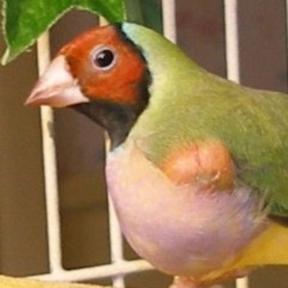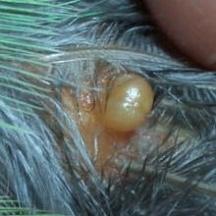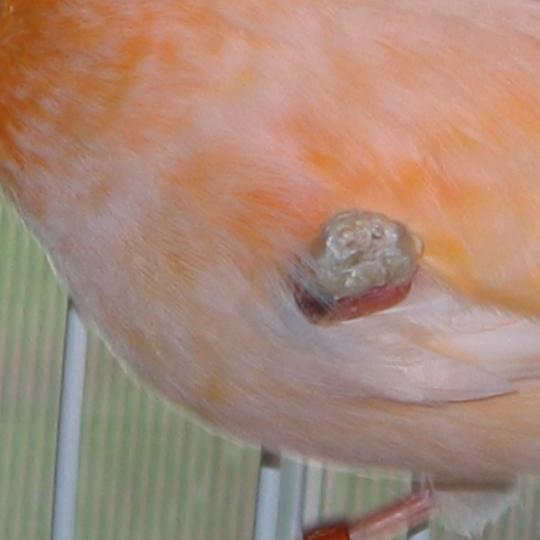PTG Problems Related to Tumors & Cysts
Click on an image to see it at full size.
 |
Diagnosis: Lump on Breast
Treatment: If seed can be felt in the lump, it could be a prolapsed crop. If no seed present, then it is an abscess and the owner will need to take the bird to an avian vet to have it lanced and drained.
|
 |
Diagnosis: A follicular cyst abscess
Treatment: Lance and drain. Beware of bleeding. Apply pressure with a cotton bud. (Q-tip) This would be best done by an experienced avian lab tech.
|
 |
Diagnosis: Feather (Follicular) Cyst.
Treatment: Feather Cysts will eventually dry up and fall off, but they will continue to occur because it is an inherited, genetic trait in canaries. They can be cut away by an avian vet if they are preventing a good quality of life for the affected bird (i.e. growing on the wing, interfering with flight)
|
 |
Diagnosis: Feather (Follicular) Cyst.
Treatment: Feather Cysts will eventually dry up and fall off, but they will continue to occur because it is an inherited, genetic trait in canaries. They can be cut away by an avian vet if they are preventing a good quality of life for the affected bird (i.e. growing on the wing, interfering with flight). In this photo you can see the twisted, spiraling feathers inside of the cyst.
|
 |
Diagnosis: This looks to be a cancerous tumor because of the blood vessel involvement.
Treatment: No cure. These cancerous tumors do not usually cause pain until they become quite large. That would be the appropriate time to consider euthanasia.
|